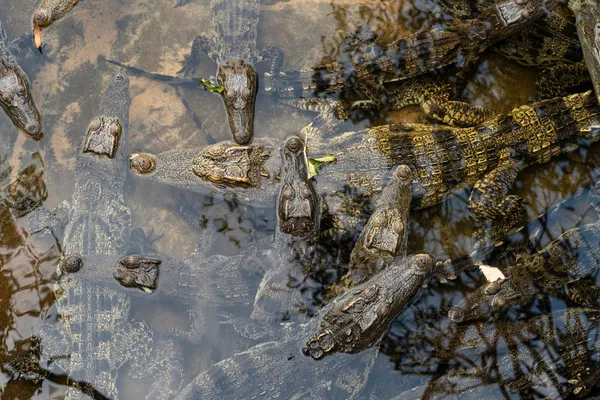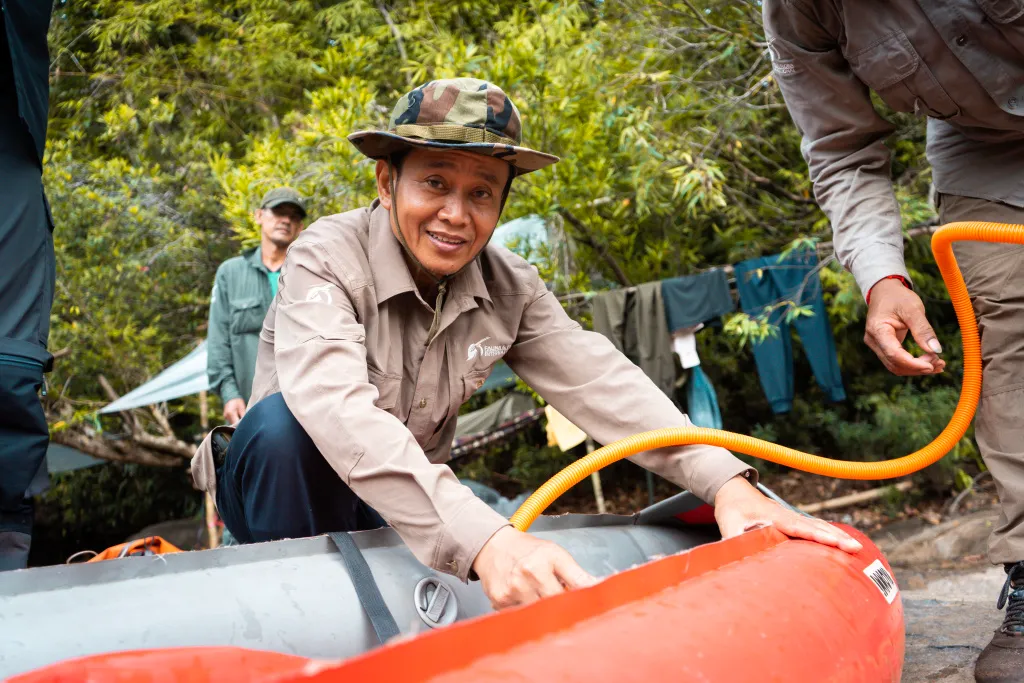[social_warfare]
A New Hope for Survival: Reintroducing the Siamese Crocodile in Cambodia’s Cardamom Mountains
In the dense, verdant heart of Cambodia’s Cardamom Mountains, a significant stride was made in the conservation of one of the world’s rarest crocodiles. Fifty juvenile Siamese crocodiles, bred in captivity, were released into the wild, marking the largest effort of its kind aimed at bolstering the dwindling populations that edge closer to extinction each passing year.
The Siamese crocodile, a victim of extensive hunting and relentless habitat destruction over decades, now teeters on the brink of extinction. Classified as Critically Endangered on the IUCN Red List, the survival of this species has become a symbol of global conservation efforts. The crocodiles were believed to have vanished from the wild until a groundbreaking rediscovery in 2000 reignited hope and spurred conservation initiatives.

This recent release is the culmination of years of collaborative efforts between Fauna & Flora International, Cambodia’s Forestry Administration of the Ministry of Agriculture, Forestry and Fisheries, and local community wardens. Together, they have spearheaded Cambodia’s first conservation breeding program. Since its inception in 2012, this program has successfully reintroduced 196 Siamese crocodiles into the protected enclaves of the Cardamom Mountains.
The process involves meticulous planning and precision. Before the release, 25 of the 50 crocodiles were equipped with acoustic tags. These tags are critical for researchers to track the crocodiles’ movements and assess their adaptation to the wild environment. The data gathered from these tags will play a pivotal role in shaping future conservation strategies.
The local communities, often the unseen heroes of such conservation tales, play a vital role. They protect the habitats and ensure the safety of these crocodiles, embodying a powerful model of community-led conservation. Their involvement not only aids in the preservation of the species but also fosters a sustainable coexistence with wildlife.


However, challenges remain. The survival rates of these reintroduced crocodiles are uncertain, and the species’ future hinges on the effectiveness of these efforts. As such, ongoing monitoring and adaptive management are crucial. Each step of the crocodile’s journey in the wild adds valuable insights into their behaviors, needs, and the threats they face.
In a broader context, the plight of the Siamese crocodile is a poignant reminder of the impact human activities have on the world’s biodiversity. The story of their decline is intertwined with the history of environmental exploitation — from habitat encroachment to illegal wildlife trade. Yet, their gradual return to the Cardamom Mountains is a testament to the resilience of nature when given a chance to recover.
This project, while a beacon of hope, is also a call to action. It underscores the need for stronger wildlife protection laws, more robust global participation in conservation efforts, and an enduring commitment to reversing the tide of species extinction. Through continued dedication and international support, the return of the Siamese crocodile to the wild may one day be seen not as a fleeting effort, but as a lasting triumph for conservation.
